In this article, I’ll go over how I choose to approach a hunt in different conditions. I still don’t have a 100% success rate, and I don’t think it’s possible to always get it right when you’re dealing with things you can’t control. However, there are a few things you can do to put the odds in your favour.
There was a time last season when I found a few birds … the weather forecast was looking right for a hunt in one or two day’s time. I went back and checked from a distance the afternoon before the hunt to confirm birds were still there, and the next morning, in a moderate nor’wester, it resulted in perfect decoying birds.
Learning
Part of the enjoyment of waterfowling for me is figuring out what I think birds will do in certain situations and then planning the hunt to suit; this knowledge is something I’ve picked up through letting the birds teach me. And, of course, a large amount of trial and error while hunting larger areas of public water over the last 25 or so years. In some situations, what you see on your scout one afternoon, and where the birds are then, is not necessarily exactly where you should be in the morning. But if you can set yourself up where the birds feel comfortable enough to land, then half the work is done.
I would hate to think how many times I’ve scouted birds sitting in a particular location – seemingly in a great location. They might be close to the edge of the lake, where you think “Man, that’s the perfect spot for a makeshift maimai or laydown blind. Those birds are right there in front of that edge; it’ll be like taking candy from a baby tomorrow!” This usually results in mental pictures of mallards hanging over decoys and little sleep that night. But then, shattered dreams the next morning!
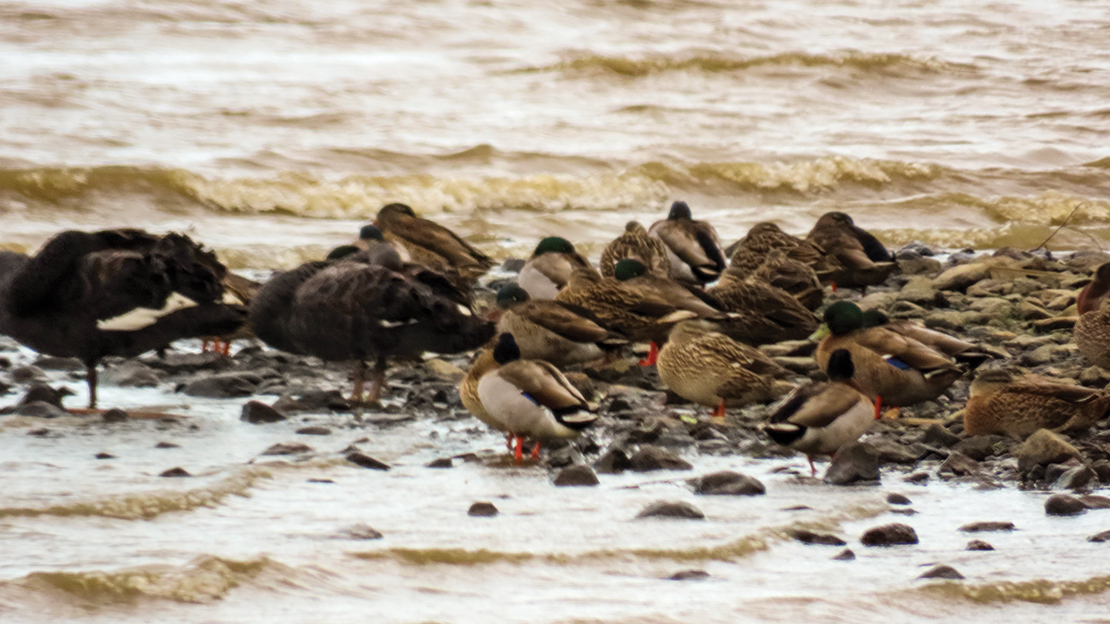
Birds That Swim In
I’ve found that those loafing birds you see – all relaxed, usually over half of them asleep – have more than likely not landed right in that great, easy-hide-location spot where they are right now. They’re usually smart and pressured birds that are suspicious; they see hunters almost every day of the season and they know most of the usual tricks.
These birds usually fly well outside shotgun range and land. They’ll swim around out wide for a little bit, just checking for what doesn’t belong there. As they’ve probably been living in this area for a couple of days at least, they get pretty good at picking up on something that’s out of place or looks unnatural.
When you scout and see them right in close, this is often because they’ve felt comfortable enough to swim into that location during the day.
Consider the Wind Forecast
When planning a hunt for a location like this, I’ll first check the weather forecast (well, three or four different ones actually … cos you know they have a low hit rate!) I do this because a reasonable change in weather can alter the birds’ habits.
For example, if you’ve seen birds there on a calm day, but the day you plan to hunt is going to be windy, things will change. With a wind direction pushing rough water into the area where these birds have been sitting, it’ll be rough in that location, and the birds will go somewhere else. You’re then better off leaving this location alone, picking a different spot and coming back when conditions are more favourable. A wind direction causing it to be sheltered in that location is usually the golden ticket, because the resident birds you’ve seen will likely be joined by others looking for shelter, and it’ll then be a great time to hunt those birds.
If it’s going to get quite rough, with high winds in a direction that’ll leave some sheltered water, then on the edge with a natural-looking hide is possibly going to be a good place to set up. This is because they may fly right up near the edge, looking for shelter, and you’ll have decoys out ready for them when they arrive. Depending on the situation, try to have most of your decoys in sheltered water. Only put decoys out in rough water if you’re struggling to pull birds into your calm area. Your decoys will be easier for birds to see in calm water, and they’ll look more natural.
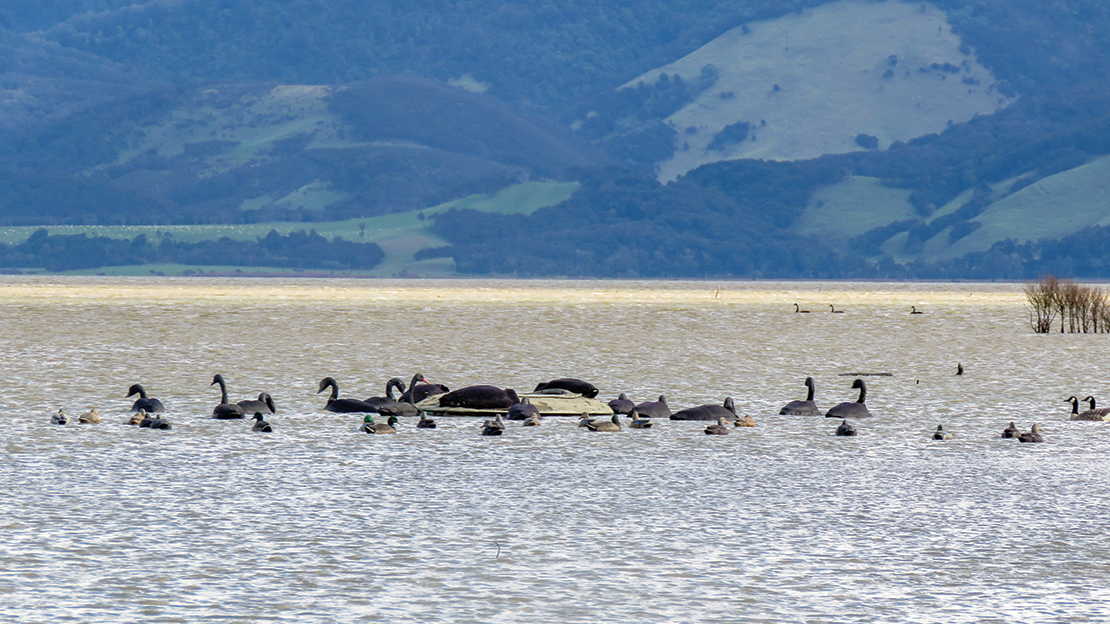
Planning the Hunt
So, back to my successful hunt …
I’d been hunting for three or four days of my 14-day trip. One morning, I’d had a nice little hunt, picking up a handful of mallards and two spoonies. I noticed a few birds swimming around near a point a fair way down this edge I was hunting. I could make out ducks and swans in my binos, but as I was quite a distance away, that was all I could be sure of. I managed to sneak up to halve the distance between myself and the ducks. Once I was closer, I could positively identify them as around 80 mallards, 40 spoonies and 120 teal.
I looked at the forecast for the following day, which was for light wind – but the direction wasn’t ideal for the location. The day after that forecasted a nice nor’wester that’d suit the spot well. Plus, with me shooting only a few hundred metres away on this day, I thought it might be best to let them rest the next day.
Hence, I hunted in a different location the following morning and returned mid-afternoon with my binos to check that the ducks were still hanging out in the same place – which they were and looking very comfortable at that! They’d mostly all moved right up close to the edge of the lake; some were standing in shallows, some were asleep. A quick forecast check still showed a nice nor’wester coming, so my plan was looking promising.
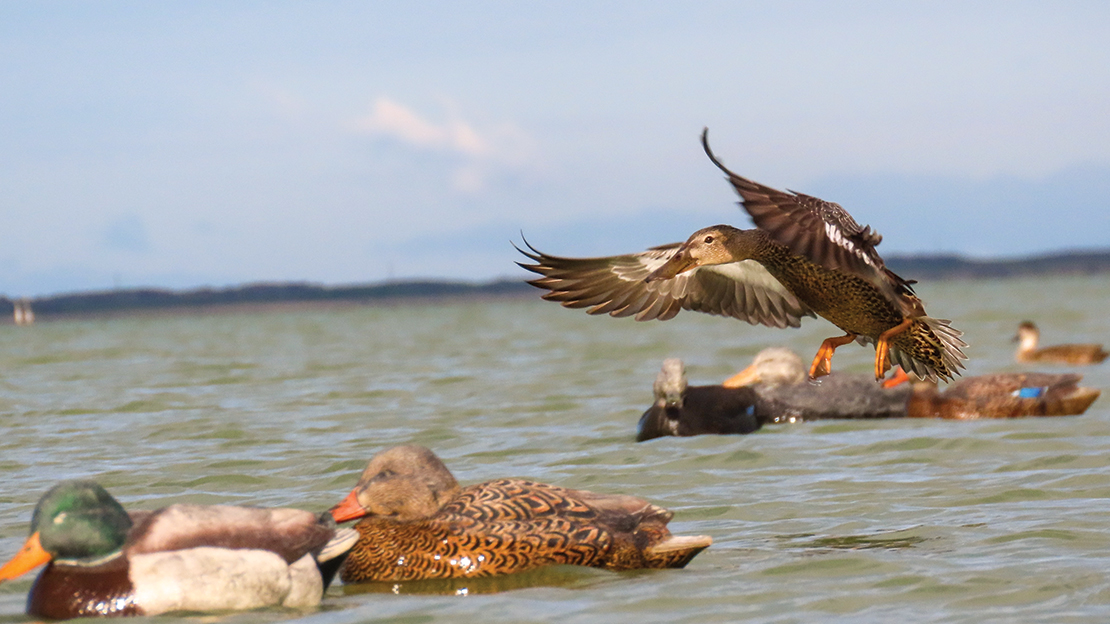
Setting Decoys
Early next morning, I headed out. I took my open-water-styled layout boat so I could put myself within range of where I usually see birds land off an edge like this one. I took my standard spread of two dozen mallard floaters and around 12 to 15 swan decoys.
My mallard decoys are all on long lines, with six decoys a string. I use an alloy peg at each end of each long line. Both large lakes I hunt on have hard and smooth beds, so weights will just drag. Some hunters will still use weights and stand on them as they set the decoys, which will work in calm to moderate conditions or if you’re hunting in rough weather but very sheltered water. The pegs hold my decoys in any conditions, and I never need to worry about them moving.
I’ve seen some hunters use plastic pipe rings, which they drop into the water and stand on to push them down into the lakebed. But I’ve also seen these same hunters end up wasting good hunting time later chasing their decoys downwind!
My swan decoys are all on single pegs, and they’re used to grab the attention of long-range birds. I have three swan shells that are usually set loosely around the boat – this just helps hide the boat.
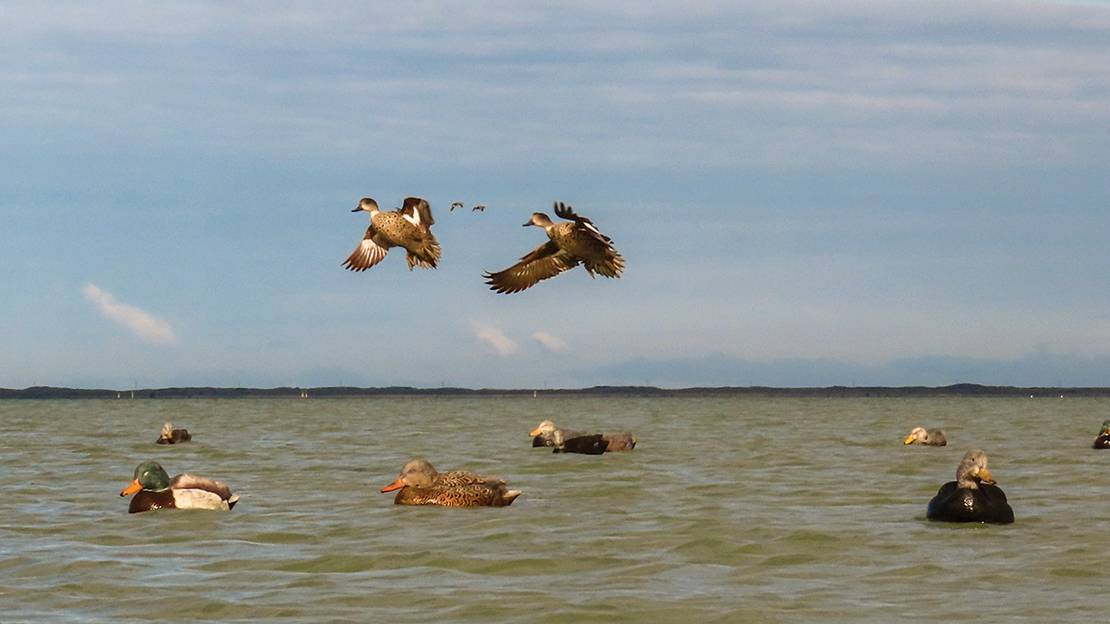
Calling Them In
I ended up about 150m off the edge of the lake; the wind was angled about 45 degrees offshore, so birds were approaching from out in the lake but also skirting the edge, which I’d frequently observed them doing. Once it started to get light, the birds started to arrive at their loafing spot.
Most of the early birds came directly off the lake, while later, birds came off the farmland behind me. The lake birds were all flying low and slow, giving me the indication that they were just cruising to this ‘quiet spot’. One or two quiet calls had them sailing straight in to my decoys.
Then a few of the farmland ducks arrived – they were much higher. I remember a flight of 10 passed over, probably 150m high. I let them fly out a wee bit, then gave them a loud call – the entire group locked wings, turned and dropped about half their altitude. They flew a couple of circles around, going wide on the second circle. I let them fly out a bit again, then let out a drawn-out call, similar to what most would call a ‘come-back call’. Again, the 10 of them turned, dropped most of their height, and were heading straight towards me – only 15m off the water at this point! They were looking to land at the same place where the early lake ducks were.
I’d set my mallard floaters to pull birds to the ideal shooting position, which is 15 to 20m out and slightly to the left, as I waited in my layout boat. This is an ideal shooting position and kill rate is very high.
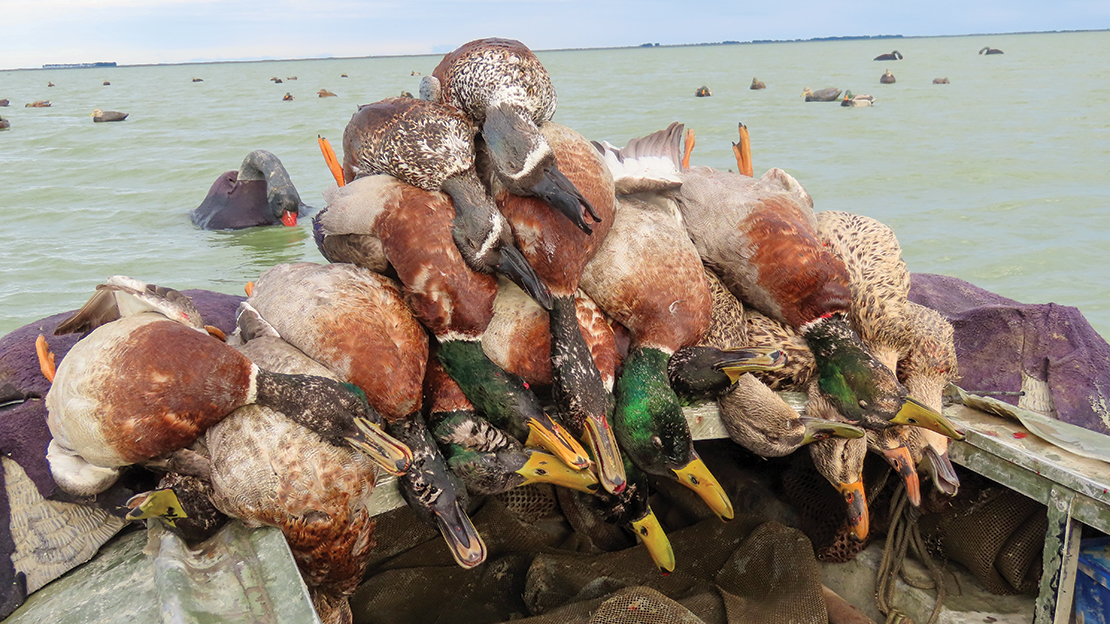
Success!
I took three separate doubles from pairs and a triple from the flight of 10 as well as a few single drakes. Two spoonie drakes were no problem – plenty of those were arriving all morning.
This was a most enjoyable hunt; the birds had behaved exactly as I’d thought they would, and they decoyed perfectly – a result of finding happy and relaxed birds. And, I’d been able to conceal myself well enough to fool a few educated public-land mallards!
Watch the Birds
After I’d finished shooting, I put the gun aside and broke out the camera, thermos and food. I sat around for a couple of hours, taking a few photos of the spoonies and teals that were still dropping in between cups of hot coffee and a few snacks. Before I knew it, it was mid-afternoon – time to pack up and go for a quick scout for the next couple of days’ hunting.
By being observant and willing to watch the birds, over time you’ll build up knowledge you can use … being open to changing locations and strategies depending on the conditions can lead to opportunities.

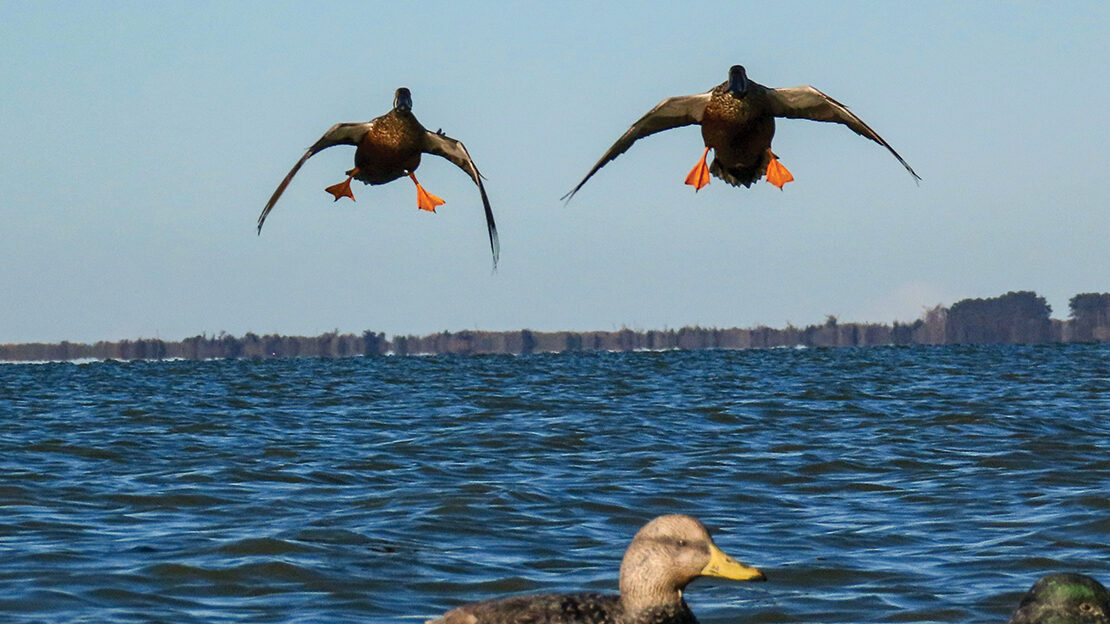
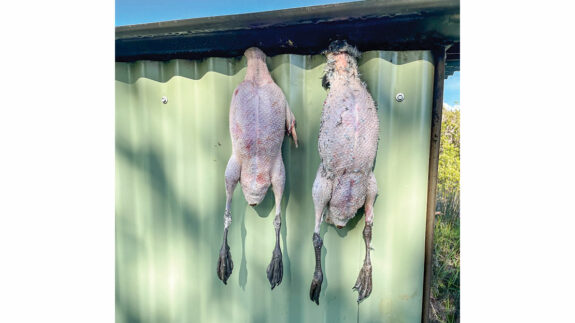
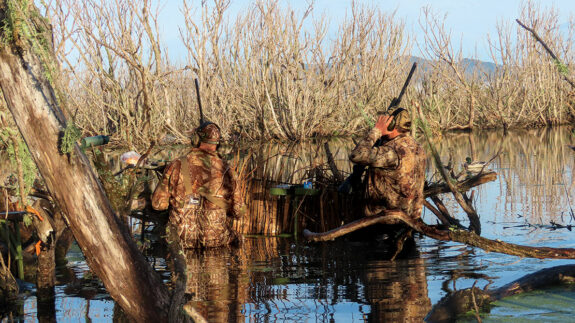

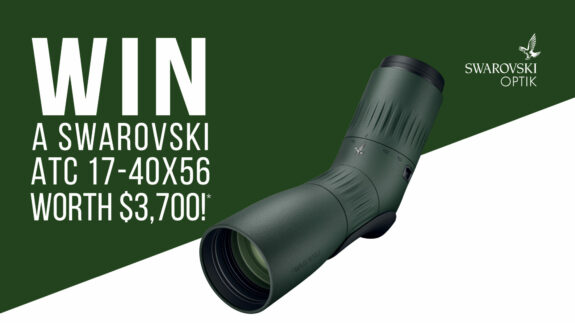

SHARE YOUR BEST PICS #NZRODANDRIFLE